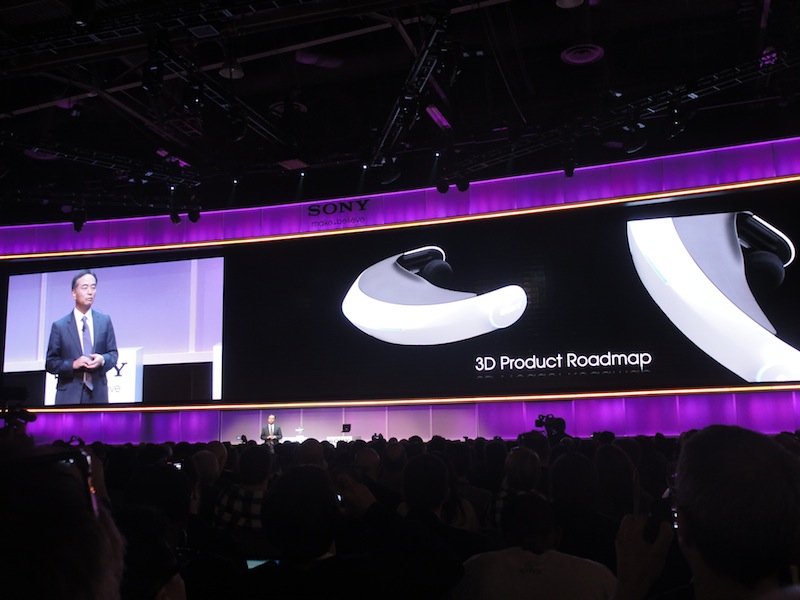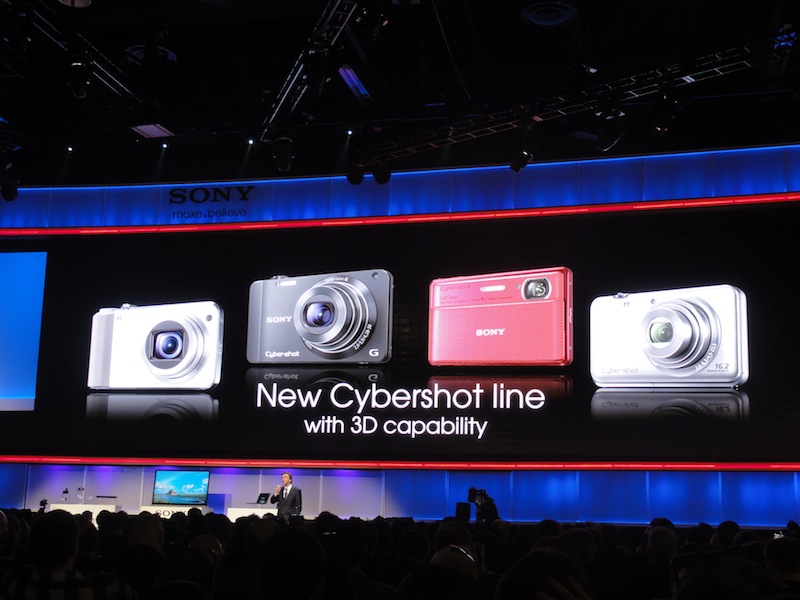
It was just a little over a year ago when a little movie, one which audiences and critics alike were unsure if it was going to flop or not due to its reported $300-$500 million budget, came into theaters in 3D. Now, with nearly $3 billion in the bank from just the tickets, Avatar is the highest-grossing movie of all time and will probably be for a decade to come. But Avatar’s effect was not just limited to the film industry where we can just write it off as a Hollywood blockbuster. Instead, Avatar has affected the way we watch movies, the kind of televisions we buy, and the technology that will be in your next camera, camcorder and handheld portable. Just a little over a year after the film’s release, manufacturers like LG, Toshiba, Samsung, and Sony are out in full arsenal with their 3D televisions, so you can watch a movie like Avatar or Despicable Me in 3D at home. In 2011, 16 out of Sony’s 27 Bravia televisions will feature built-in 3D with no 3D transmitter bar needed. In two months’ time, Nintendo is releasing the 3DS, their next handheld portable gaming machine that will display games in 3D. Just in case you get pulled into a 3D event, you can now look good and not need to borrow a pair of glasses as Oakley and other high end companies will be releasing their own stylish 3D glasses. Sure 2010 might have had some sour points with films like Clash of the Titan (though I enjoyed the movie myself) and The Last Airbender with their horrible last minute rush job of up converting a movie that was not made in 3D to be in 3D. Still look how far we have come already. Tron was a smash hit with it’s 3D and Alice in Wonderland, another post converted movie hit the $1 billion mark as well and animated films like Pixars Toy Story 3 and How to Train a Dragon which were all also released in 3D. Now we are seeing more and more movies being filmed in 3D from the beginning like the up coming Transformers: Dark of the Moon, the Sony Pictures Spider-man reboot and we are seeing some of Hollywoods top directors like Martin Scorsese and Steven Spielberg plan their upcoming projects with 3D in mind.
Of course as I pointed out, 3D is not going to be limited to just the movie experience. Nintendo will indeed be pushing out their Nintendo 3DS in two months and that will introduce 3D to a large audience, who will grow up with 3D as just the standard just like how kids in the last 7-10 years might view HD as nothing new. Remember how much flack HD got when it was first introduced and many wrote it and Blu-ray off as just a gimmick and a fad. Fast forward a few years and both are the industry and consumer accepted standard. Lets also not forget Sony when it comes to gaming and 3D, Sony is making sure that their AAA games like Gran Turismo 5, LittleBigPlanet 2, Killzone 3 and Uncharted 3, along with their new gaming attachment, the PlayStation Move are offered to consumers in 3D. If you haven’t had a chance to view these games in 3D, I highly recommend you visit your nearest Sony Style store as they will blow you away with how crisp, deep and beautiful they are. Still, when all is said and done, gaming is just another avenue of 3D that is being catered to the audiences by those who have the power to create them; big companies and it was apparent during CES that Sony understood, that in order for 3D to succeed, they needed to bring the technology down to the consumer level and give the public the capability to create 3D for themselves for cheap. After watching and playing with their 2011 arsenal of products, I now believe.
You see, for any real product to catch on, it cannot be something that is just controlled by the elite. Sure all products come to market higher priced than what consumers might want, but like all technologies, it will eventually get cheaper as consumers adapt and newer and better versions of them are released. Years ago, you couldn’t get a 3D TV for under $5,000, and now you cannot find a TV that is not HD. Even the $500 television you find at Wal-mart is in fact HD (now this isn’t insinuating that all HD is the same, but rather the fact that anybody can have access to it). But that’s really only one avenue to view HD in; how about recording? Every single camera on the market now has some form of HD recording in it. From the thinnest smart phone on the market, the iPhone 4, which can record 720p video, to pocket camcorders, like the Flip HD, which can be bought for $150 with 8GB of memory, consumers can record HD in all sorts of ways without really thinking about them. If you own a Mac, you can open iMovie and start editing your HD video in minutes and soon after that be posting it to sites like YouTube and Facebook. Through the consumer, HD has become the norm and the standard, due to its ease of handling and low entry price point. I’m here to tell you that 3D will be the same and Sony is leading the way.
In 2010 when the first wave of 3D televisions came to the market, the technology was built in to Sony’s higher end models, like the LX and HX, which all started well above $3,500, and their lower end models, like the EX and NX, were 3D-capable, meaning that with a $50 transmitter bar attached, they could then have 3D. Fast forward a year and as I said earlier, 16 out of Sony’s 27 2011 televisions will be getting 3D built in, with no transmitter bar needed and many of them will start at the $1,000 range. Talk about an easy entry for consumers. All 3D Blu-ray movies will also have a 2D option for playback on on 3D televisions and the nearly 50 million PlayStation 3 units in the market can play back 3D games and movies. But this is still playback; how about 3D in the consumer’s hand?
Sony has that avenue covered as well. During CES, Sony showed off their Cybershot models taking 3D pictures which will be available in the next few months. For those unfamiliar with Sony’s lineup of cameras, the Cybershot models are their consumer-level, pocket-sized cameras. Better yet, they look exactly like traditional pocket cameras and are the same size and function exactly the same and will be priced (for the 2D models, the lineup starts around $120) between $220 and $380 tops. So the next time you are posing for a picture at Disneyland or ComicCon, you won’t know if the picture of you was taken in 2D or 3D. For those who want a little more, Sony is releasing their Handycam, the HDR-TD10 which will come with double Sony G lenses, double “Exmor R” CMOS image sensors, and double BIONZ image processors to capture full 1080p 3D with 5.1 surround sound and 10x zoom with a built-in 64Gb hard drive for $1,500. Not only that, the camera’s 3.5-inch touch LCD can play back 3D, without the need for glasses. Still think 3D is a fad? Well then look no further than the Bloggie 3D. The Bloggie lineup has been Sony’s answer to the Flip cameras of the world. They are pocket-sized camcorders that record traditionally in MP4 which are perfect to take on trips and hangout times with friends. These units usually come in 4GB and 8GB variations with their bigger HD siblings costing between $150 to $200, and thats exactly the price of Sony’s Bloggie Touch HD series, but during CES, Sony lived up to its promise of “3D gets personal”. The Bloggie 3D is everything you would expect a Bloggie to be. It’s pocket-sized, easy-to-use, and elegant in design, and yet when you look on the front of it, the camcorder has 2 lenses in the front for 3D recording. All of this comes in 1080p with a 5 megapixel still camera and 8GB internal memory card for $250.
When you look back at this, we should put everything into context that with all these advancements, we’re still only a year into the technology companies’ embracing of 3D. Many companies have announced 3D support with more and more televisions eventually going 3D with no glasses. This is something even Sony itself showed off during CES on their smaller Bravia televisions with crisp picture quality. Though these Bravias might be a few years down the line before they come into the market with the sizes and prices that the consumer demands, I believe that they show an exciting roadmap to where 3D is headed. Only then will audiences truly embrace 3D for viewing because they don’t need to go out of their way to purchase additional glasses and sync them with their televisions. Till then, with the tools Sony is giving consumers like the Bloggie 3D and Cybershots, consumers can create and share personal content in 3D without going out of their way, and once a technology is personal, it’s no longer an object but an extension of ourselves. Life is in 3D and that’s how our technology will be in the future and now in 2011.
Correction:
Thanks to our reader Stan for pointing out a model mixup in our article!

